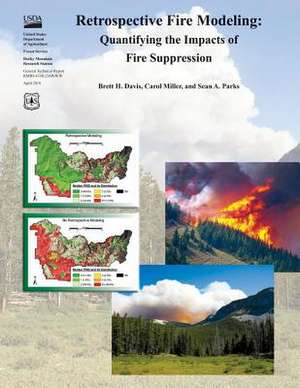Retrospective Fire Modeling
Autor Brett Davis, Carol Miller, Sean Parksen Limba Engleză Paperback
Preț: 94.88 lei
Nou
Puncte Express: 142
Preț estimativ în valută:
18.16€ • 19.73$ • 15.27£
18.16€ • 19.73$ • 15.27£
Carte disponibilă
Livrare economică 31 martie-14 aprilie
Preluare comenzi: 021 569.72.76
Specificații
ISBN-13: 9781480172067
ISBN-10: 1480172065
Pagini: 46
Dimensiuni: 216 x 279 x 3 mm
Greutate: 0.13 kg
Editura: CREATESPACE
ISBN-10: 1480172065
Pagini: 46
Dimensiuni: 216 x 279 x 3 mm
Greutate: 0.13 kg
Editura: CREATESPACE
